In the 1945 photo of HKU posted recently, an 8-sided roof down in the foreground caught my eye:
It's the roof of a cast-iron water tank. The tank is right at the top of the campus, near the entrance to the university from Kotewall Road.
I've seen it many times over the years, and wondered how old it is. Now we know it dates back to 1945 at least.
Here are some photos I took this morning. If you walk along the path above University Avenue, when you get near the top you'll see the tank off in a clump of trees to the left:
One of the panels has the text "B O" and a symbol on:
The roof has rusted through. Poking a camera inside shows the old roof supports still in place, but that several of the roof segments have collapsed:
Can anyone tell us when it was built, and what the characters and symbol mean?
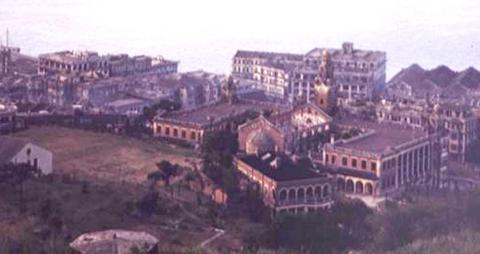
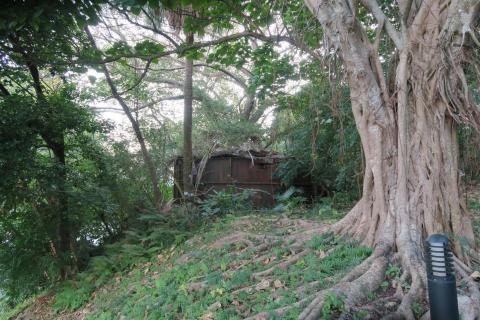

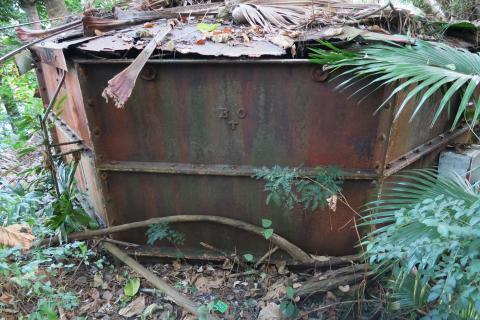
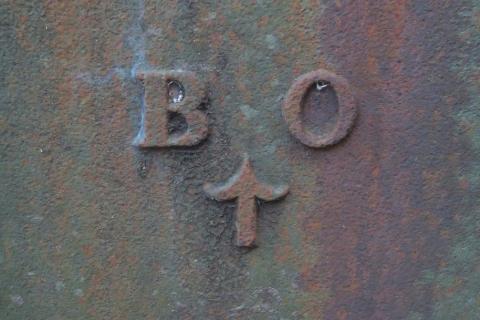
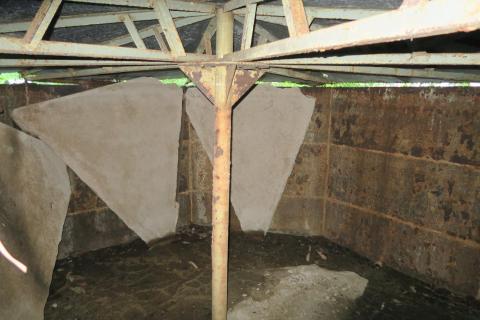
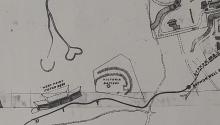
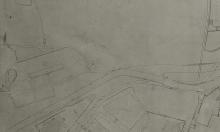
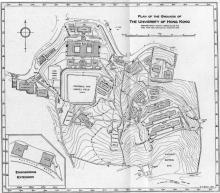
Comments
Water Tanks in Bermuda
This water tank is 1894 and was very much on land back in the day, hurricanes have eroded the land away over time.
Willy Freeman, Bermuda
Bermuda
Thanks Willy, its good to get confirmation this design of tank was in use in other parts of the British Empire, and also that they were still being made later than the 1850s.
Regards, David
Bermuda/
Not sure if Willy (freeman) is still active. If you are, could you tell me where the tank above was when you photographed it. Going to Bermuda soon and might try to check it out.
These tanks were also common in other British colonies, e.g. Gibraltar.
Supplementary notes to the Iron Tank
A review of an 1889 map shows the “Glenealy Tanks” near present-day Glenealy Valley, marked with octagonal and circular shapes matching Water Supplies Department records, though with slight positional discrepancies. Nearby, a similar cluster—the “Albany Tanks”—shares matching shapes and scale. Oral history from local residents recalls the area as “Tit Kong” (Iron Hill), likely a misheard version of “Tit Gong” (Iron Tank), referencing the iconic cast-iron water tanks that once stood there. These tanks, installed before the 1890s, were dismantled around 1896 and later reused at the Peak, and possibly again at HKU in the 1910s for flushing purposes. (As part of our pledge when requesting permission to use the HKU iron water tank image, we are pleased to share the following excerpt from Ask the Water: Hidden Stories Behind Hong Kong’s Waterworks History as supplementary context)
Water Tanks Worldwide
These tanks were used around the world. Examples seen in South Africa, the Caribbean, Gibraltar, St Helena and, of course, the UK. Roughly 1840 until about 1900, possibly later.